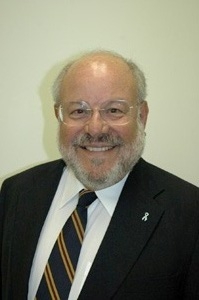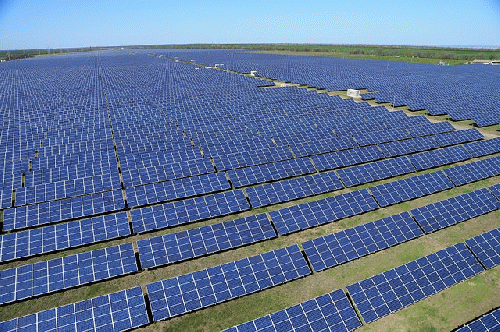Sacrificing green for green. That's what cutting down woodland and using farmland to erect solar power systems is about.
Solar energy is great! We have solar panels on our more than century-old saltbox house in Sag Harbor on Long Island and it is marvelous seeing the utility meter going backwards as the panels generate plentiful electricity.
But on Long Island and elsewhere there is a push to clear forests and exploit agricultural land for solar systems--sacrificing green for green.
The forests that would be eliminated provide a home for many animal species and birds, they absorb carbon dioxide, provide aquifer protection and places for people, especially on crowded Long Island, to find peace and for recreation.
Using farmland--the most precious of all land--for solar facilities is outrageous.
An especially outrageous example of this in Long Island's Suffolk County involves the most historic farm in all the county--the Suffolk County Farm and Education Center in Yaphank--and a push by some county officials to erect a massive solar system on 25 acres of agricultural land at it.
The Suffolk County Farm is that beautiful farm one can see just to the south of the Long Island Expressway west of the William Floyd Parkway exit.
It is living testimony to what all of Long Island once was--and much of it still is. Suffolk, the eastern half of Long Island, remains one of the top counties in New York State in value of its agricultural produce. The county's pioneering Farmland Preservation Program, initiated in 1974 and since emulated around the United States, is emblematic of Suffolk's commitment to save farmland.
The farm was an adjunct to the county's almshouse or poorhouse that opened in 1872, land on which its indigent residents could grow their own food. Since 1974 it has been operated by Cornell Cooperative Extension of Suffolk County as, notes the state's "I Love NY" website, "A model farm education facility and also a real working farm." It's a tourist attraction--and so important for youngsters in Suffolk, particularly those from its suburban communities, a place for them to visit and learn about cows and chickens and how food is grown on the earth.
The farm is not very large, a little over 200 acres in total. The solar system would go up on this earth, be run by a private company and send electricity to county offices in Yaphank.
Fortunately, the Suffolk County Council on Environmental Quality, established in 1970 as the environmental watchdog of county government, tabled action last month on the bid to use the farm for a solar facility. The application will come back this month. Among the issues: the farmland on which the solar panels would be placed was specifically put in a category of protected farmland by the county in 2003.
The push to build the solar facility at the Suffolk County Farm comes amid other "utility-scale" solar schemes in Suffolk, among them, a 72-megawatt set-up for which 350 acres of coastal forest in Shoreham would be destroyed, and a 9.5 megawatt facility on 60 acres of a sod farm also in Shoreham. Meanwhile, in Long Island's Brookhaven and Riverhead Towns, laws have been enacted barring large-scale solar facilities on farmland.
Solar is a stupendous energy source. As Reuters recently reported: "Solar power is on pace for the first time this year to contribute more new electricity to the grid than will any other form of energy."
Inventor Thomas Edison is credited with saying nearly a century ago: "I'd put my money on the sun and solar energy. What a source of power!" And this was way before, in year after year in recent decades, the efficiency of solar panels (their ability to convert sunlight into electricity) has skyrocketed while their costs have plummeted. Solar is now totally economic. And the sun doesn't send bills.
There are hundreds of thousands of houses on Long Island the roofs of which could provide usable platforms for solar power. There are thousands of industrial buildings on top of which solar panels could be placed. There is an ocean of parking lots where solar panels can be installed. The solar panels at the parking lots at Suffolk government's Hauppauge and Riverhead centers point to that.
(Note: You can view every article as one long page if you sign up as an Advocate Member, or higher).






